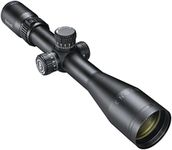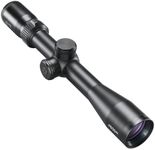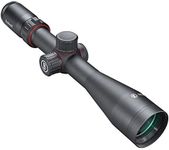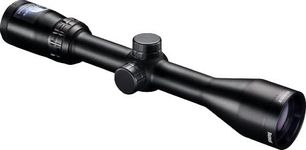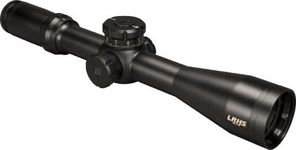Buying Guide for the Best Bushnell Rifle Scopes
Choosing the right rifle scope can make a big difference in your shooting experience, whether you’re hunting, target shooting, or just enjoying time at the range. The best scope for you depends on how and where you plan to use it. Understanding the key features and specifications will help you match a scope to your needs, ensuring you get clear views, reliable performance, and comfortable use.MagnificationMagnification tells you how much closer the target will appear compared to the naked eye. It’s usually shown as a number or a range, like 3-9x. Lower magnification (1-4x) is great for close-range shooting and fast target acquisition, while higher magnification (9x and above) is better for long-distance shots. If you mostly shoot at short to medium distances or need to track moving targets, a lower range is ideal. For precision at long range, go for higher magnification. Think about your typical shooting distance and choose accordingly.
Objective Lens DiameterThe objective lens diameter, measured in millimeters, is the size of the front lens. A larger lens lets in more light, which can make the image brighter and clearer, especially in low-light conditions. Common sizes range from 32mm to 50mm. Smaller lenses are lighter and more compact, good for daytime use and easier handling. Larger lenses are heavier but better for dawn, dusk, or shaded environments. Pick a size that matches your shooting conditions and how much weight you’re comfortable carrying.
Reticle TypeThe reticle is the crosshair or aiming point you see when looking through the scope. There are many types, from simple crosshairs to more complex designs with dots or lines for estimating range and bullet drop. Simple reticles are easy to use and great for beginners or general shooting. More advanced reticles help with long-range accuracy and compensating for bullet drop or wind, but can be more complicated. Choose a reticle that matches your experience level and the type of shooting you plan to do.
Tube DiameterTube diameter is the width of the main body of the scope, usually measured in millimeters (like 25mm or 30mm). A larger tube can allow for more adjustment in elevation and windage, which is useful for long-range shooting. Smaller tubes are lighter and may be easier to mount. If you need a lot of adjustment for distance or wind, a larger tube is helpful. For general use, a standard size is usually enough.
Parallax AdjustmentParallax adjustment helps keep the target and reticle in the same focus, especially at longer distances. Some scopes have fixed parallax, while others let you adjust it. If you shoot at varying distances or want the sharpest possible image at long range, adjustable parallax is useful. For short-range or casual shooting, fixed parallax is usually fine. Consider how precise you need to be and at what distances you’ll be shooting.
Eye ReliefEye relief is the distance you can hold your eye from the scope and still see the full image. Longer eye relief is safer, especially with rifles that have strong recoil, as it helps prevent the scope from hitting your face. Shorter eye relief can be fine for low-recoil rifles or if you want a more compact setup. Think about your rifle’s recoil and your comfort when choosing eye relief.
Field of ViewField of view is how wide an area you can see through the scope at a certain distance, usually measured in feet at 100 yards. A wider field of view makes it easier to spot and track moving targets, which is helpful for hunting or shooting at closer ranges. Higher magnification usually means a narrower field of view. If you need to see more of your surroundings, look for a scope with a wider field of view.
